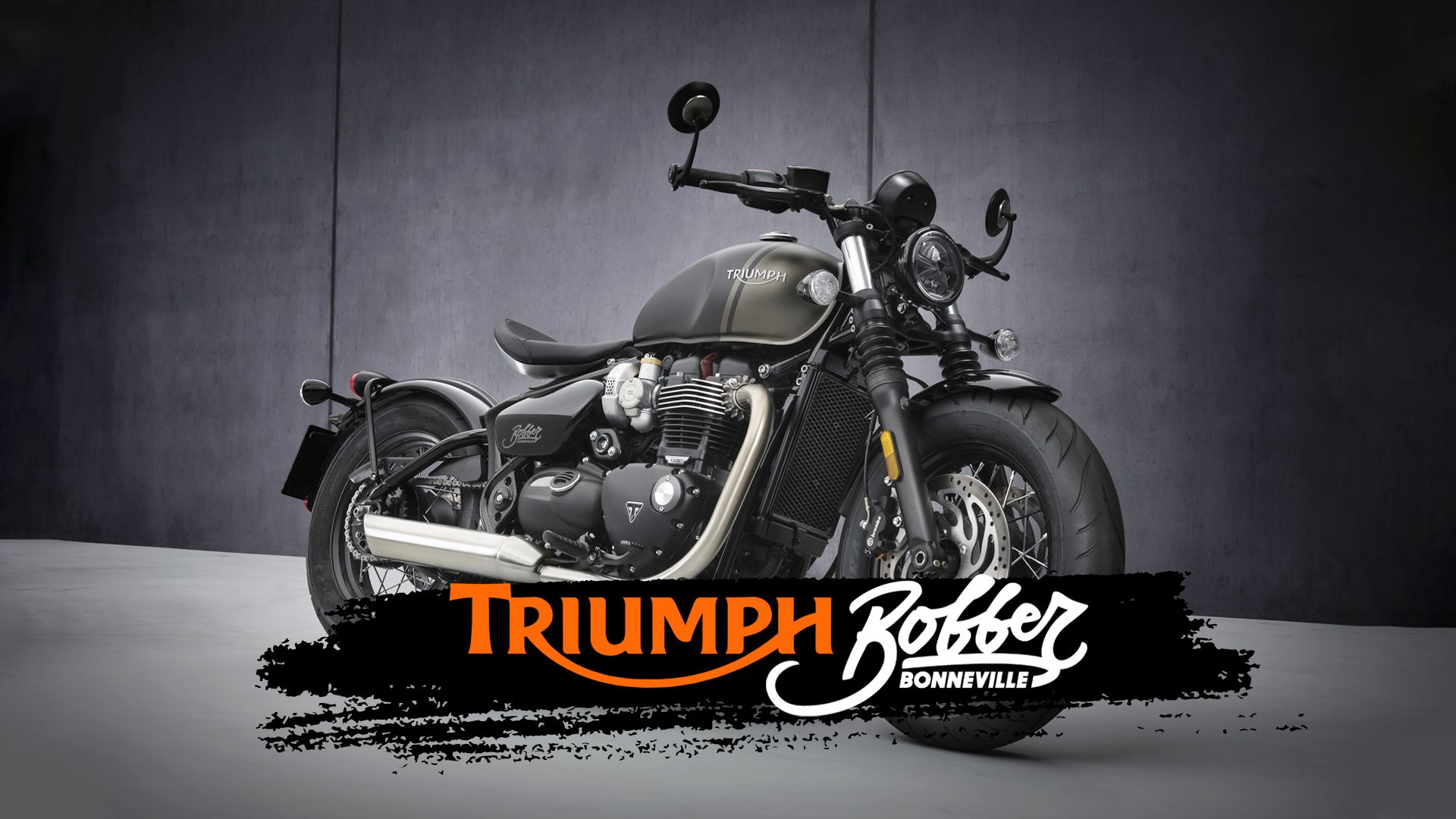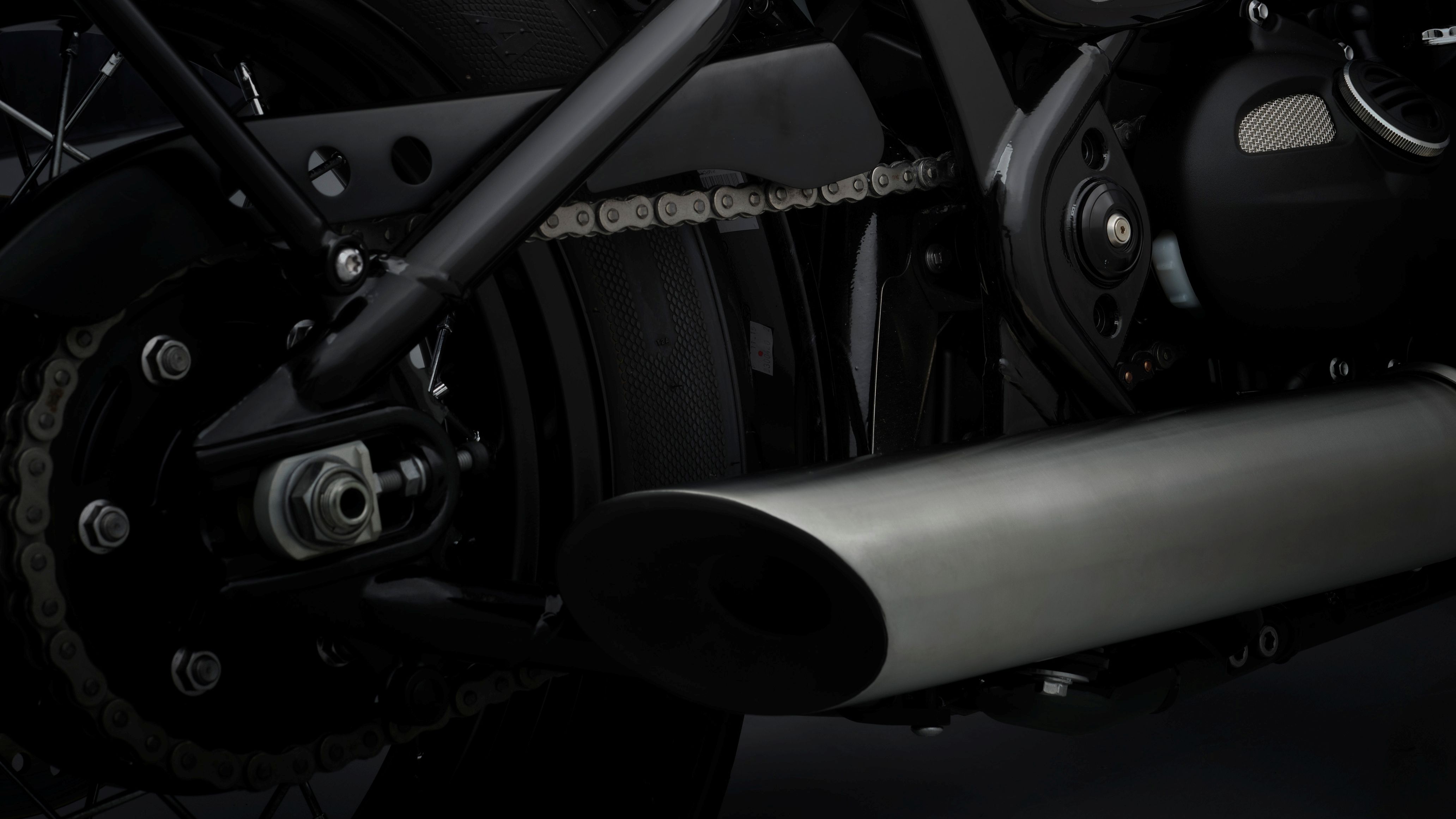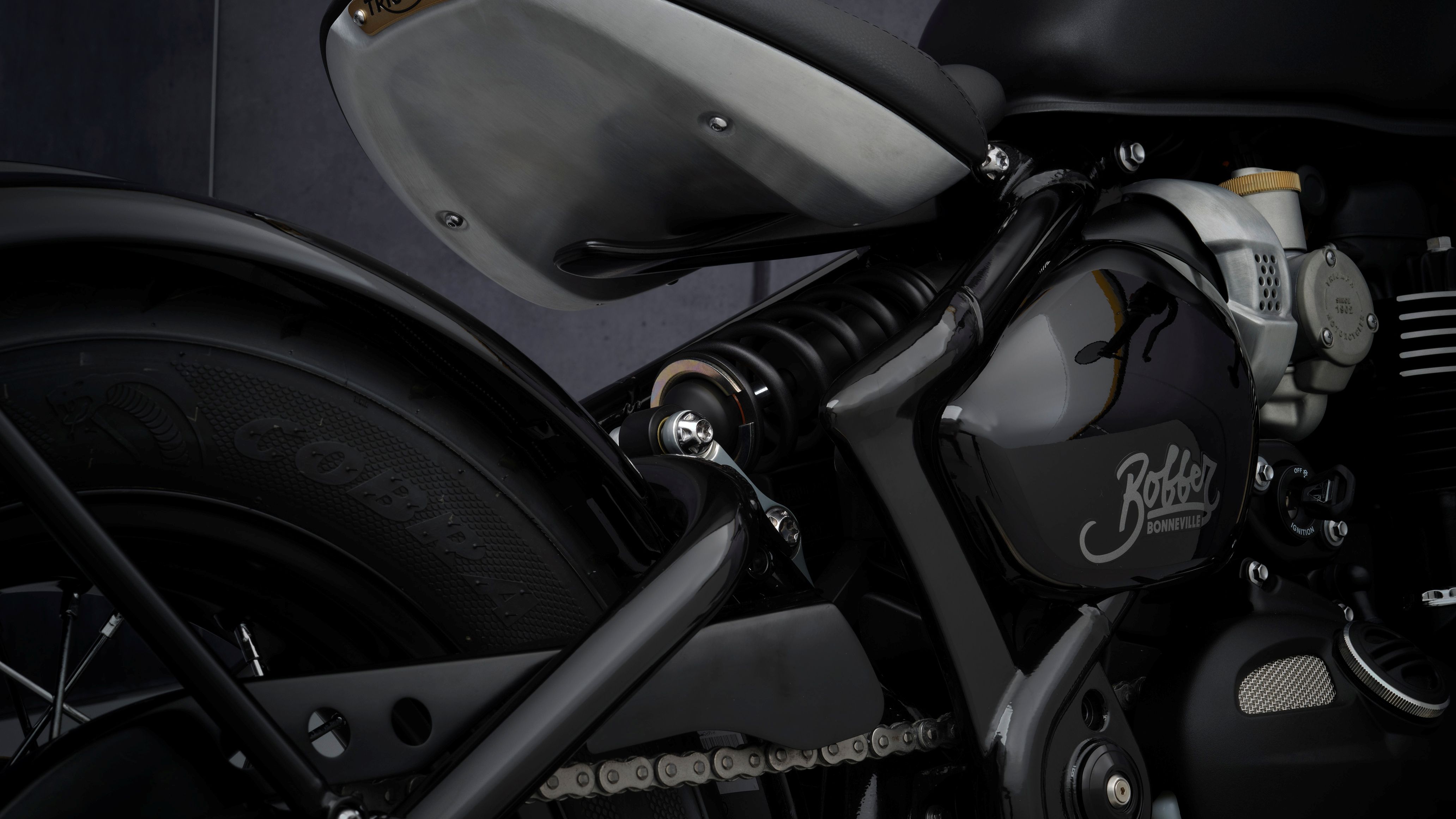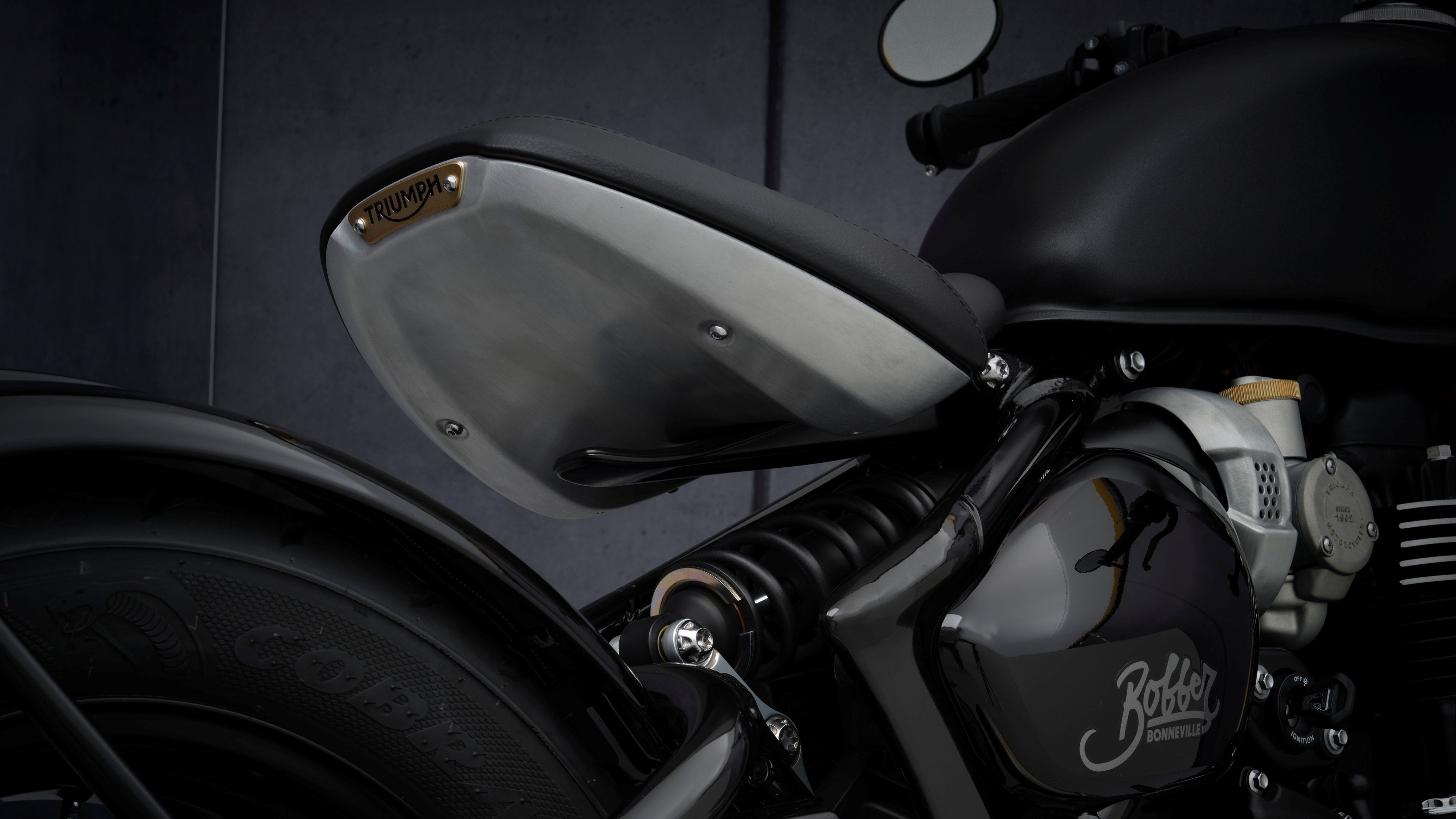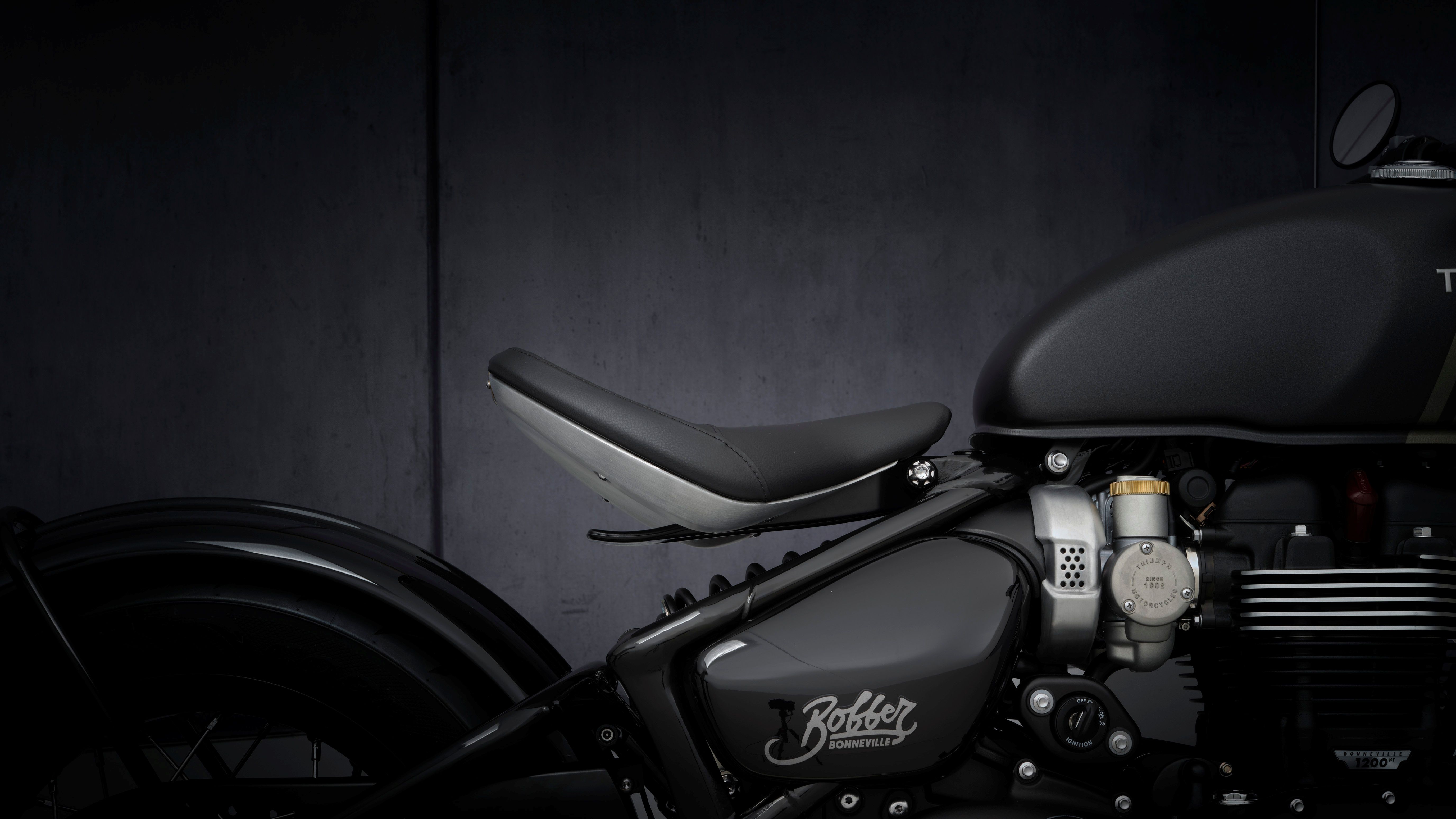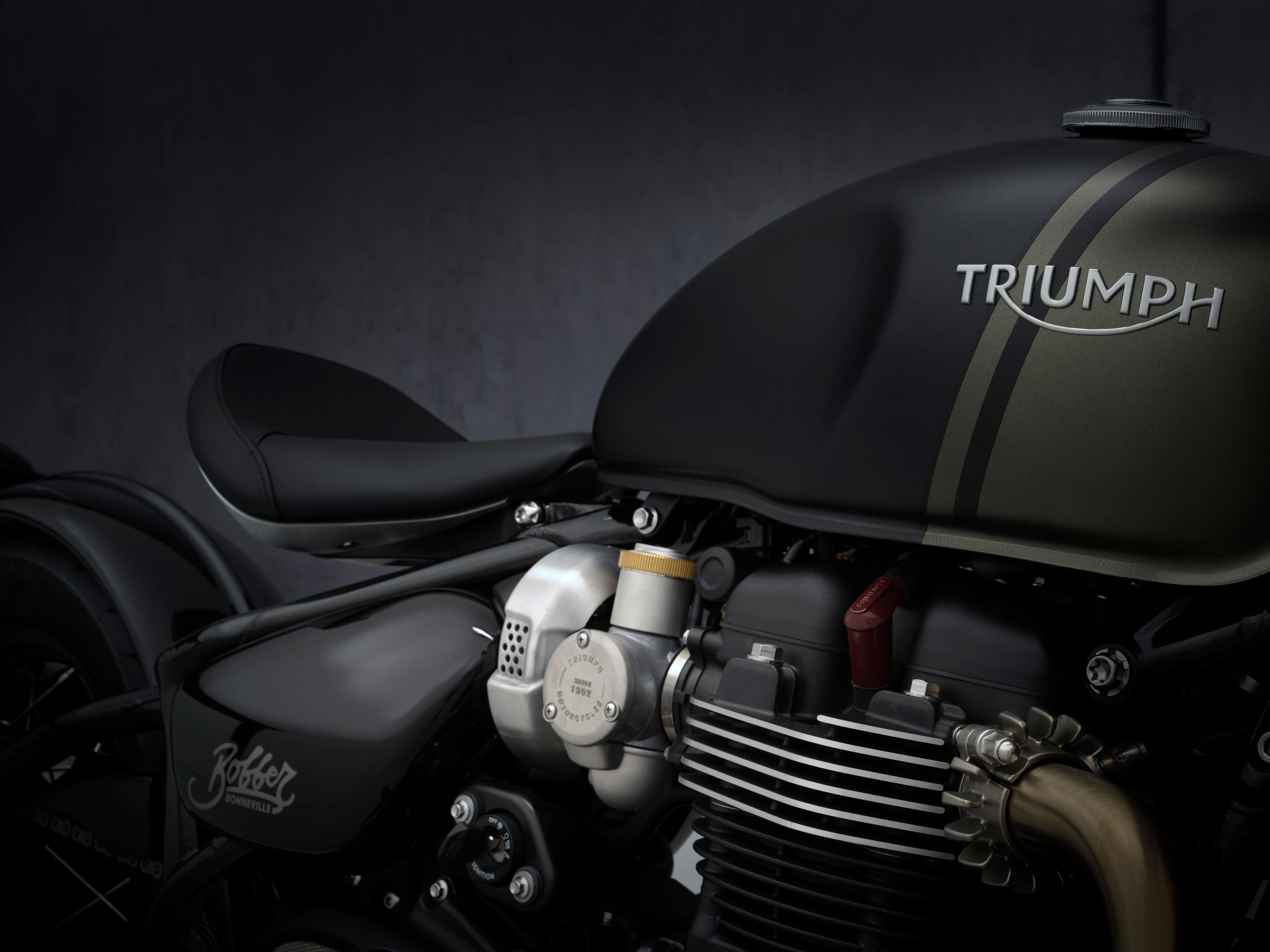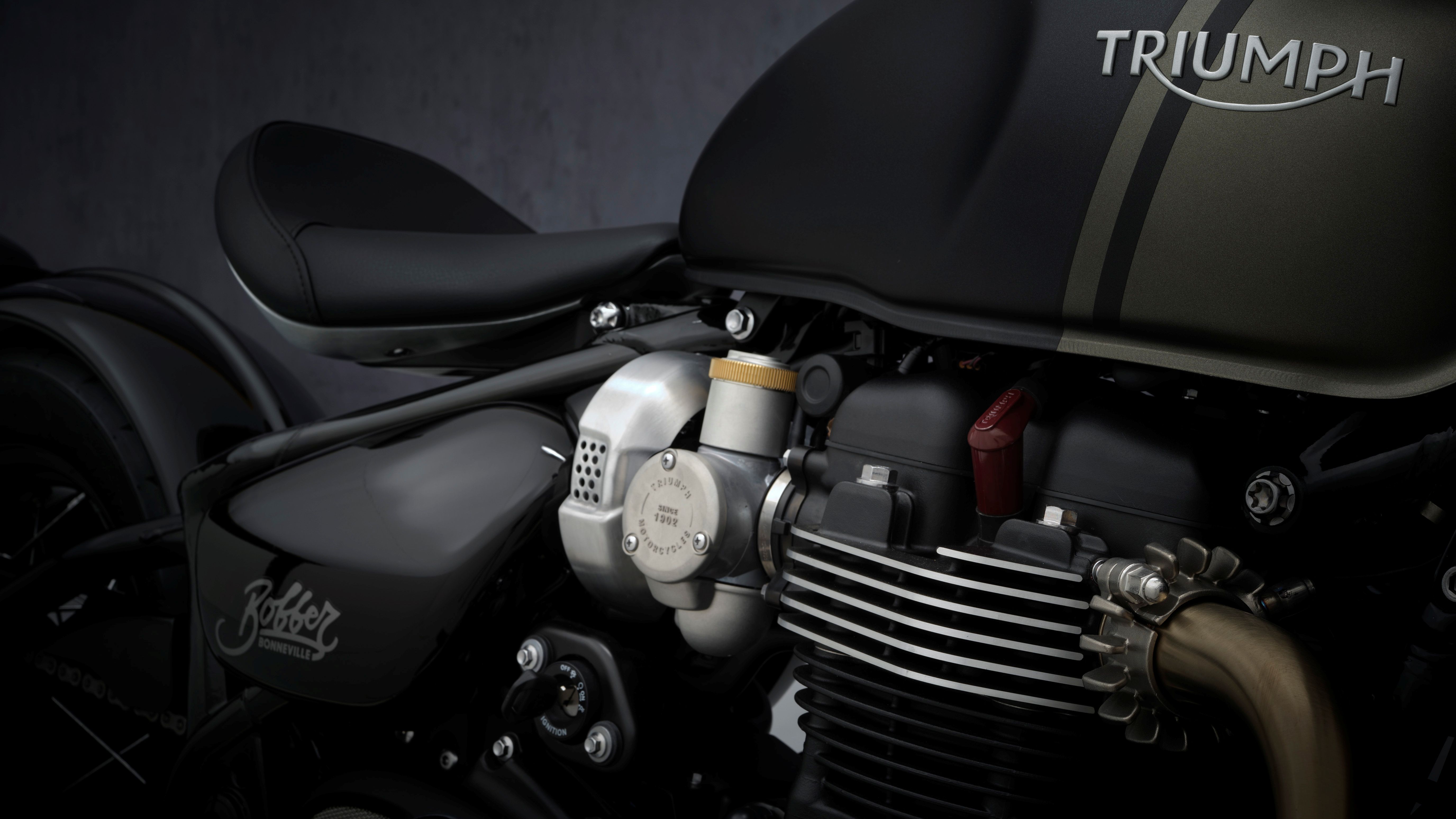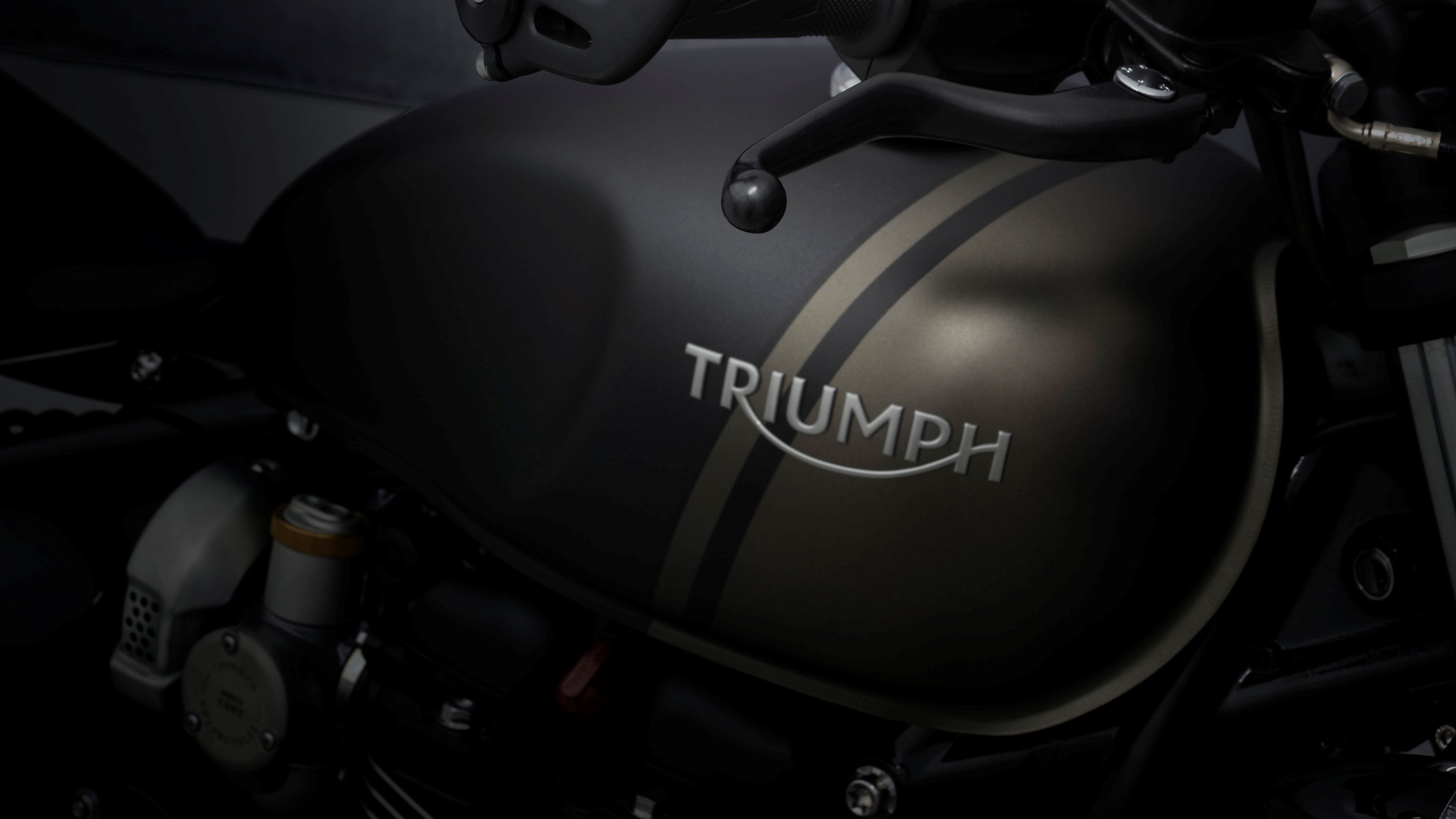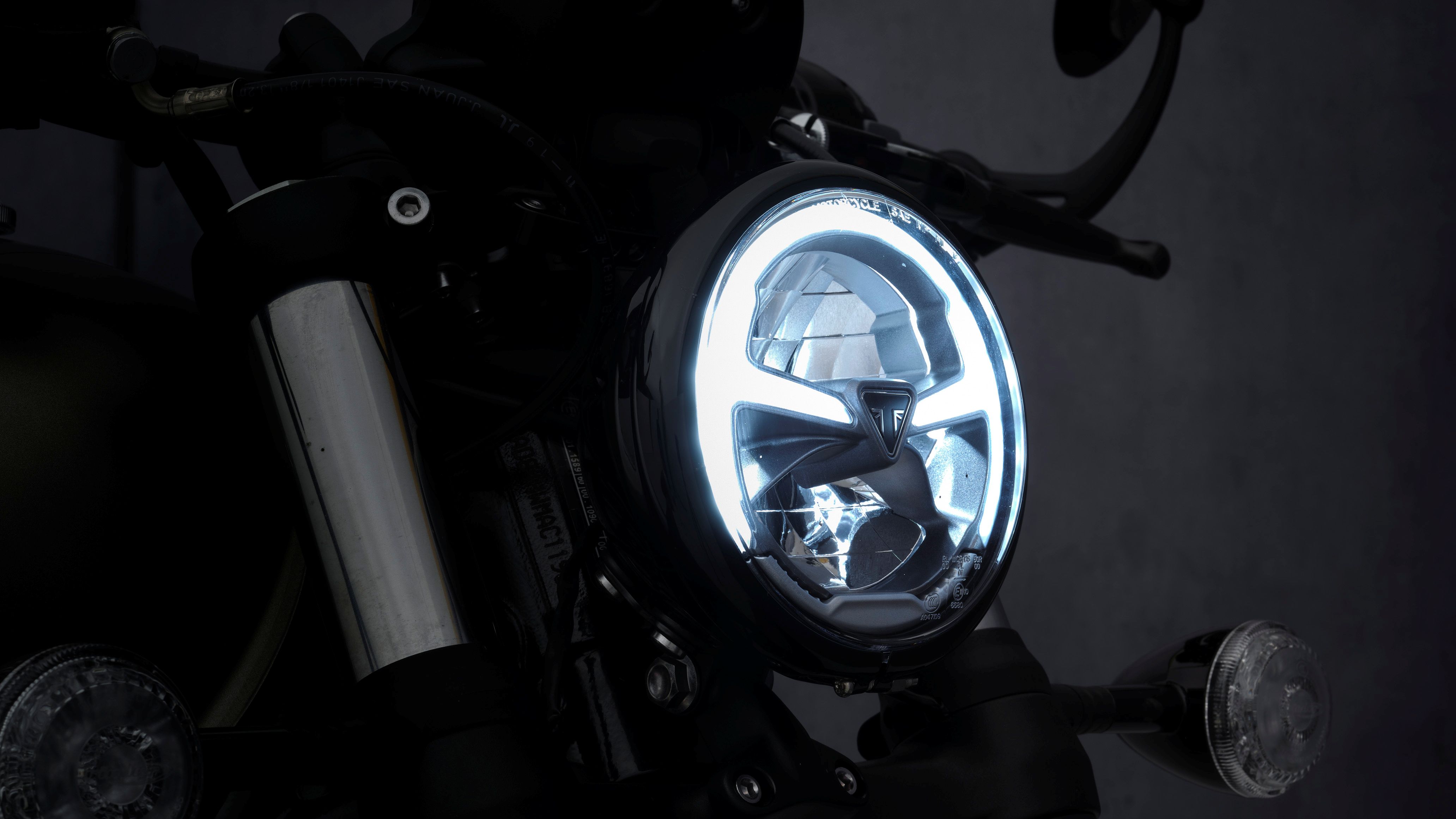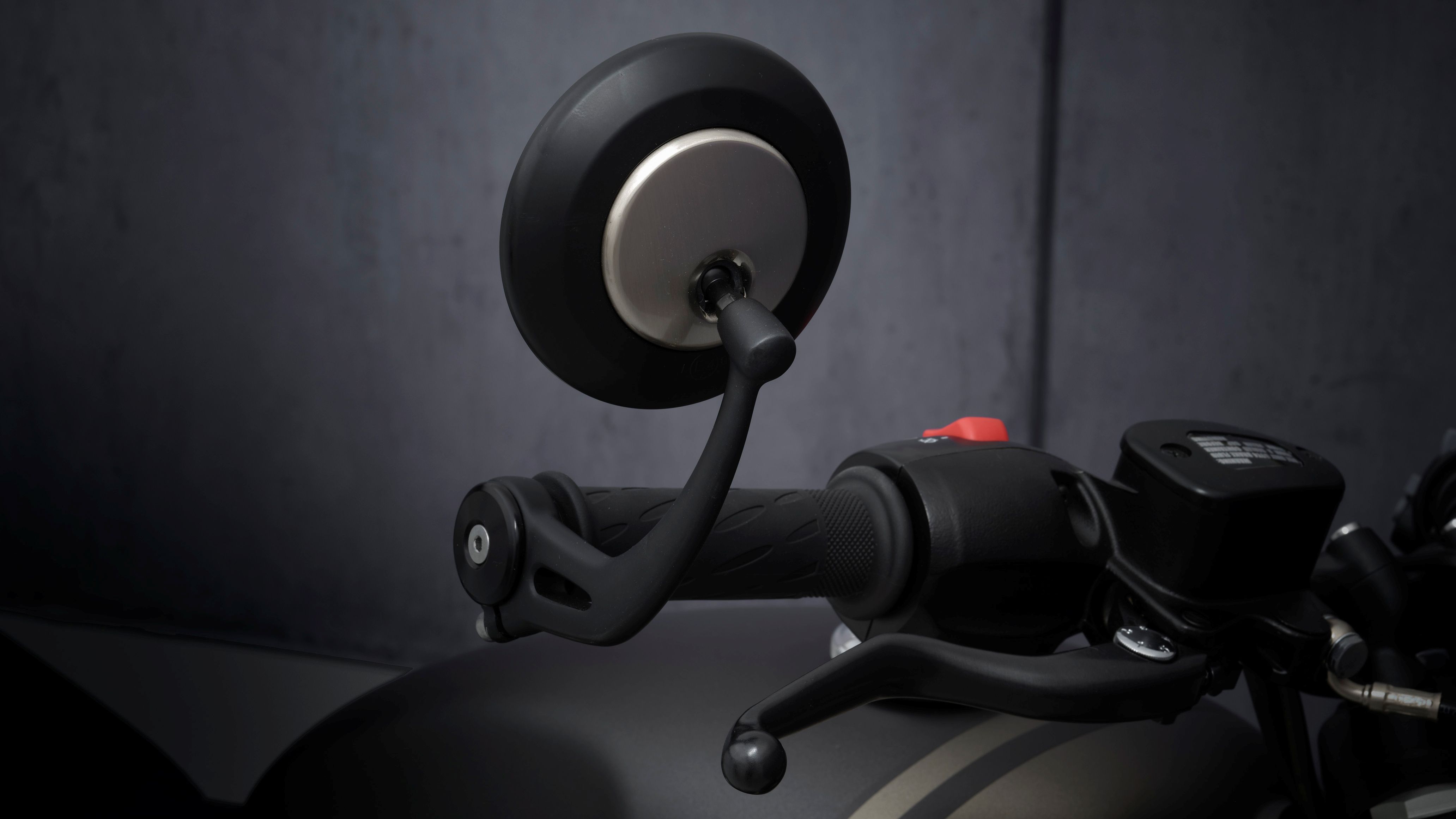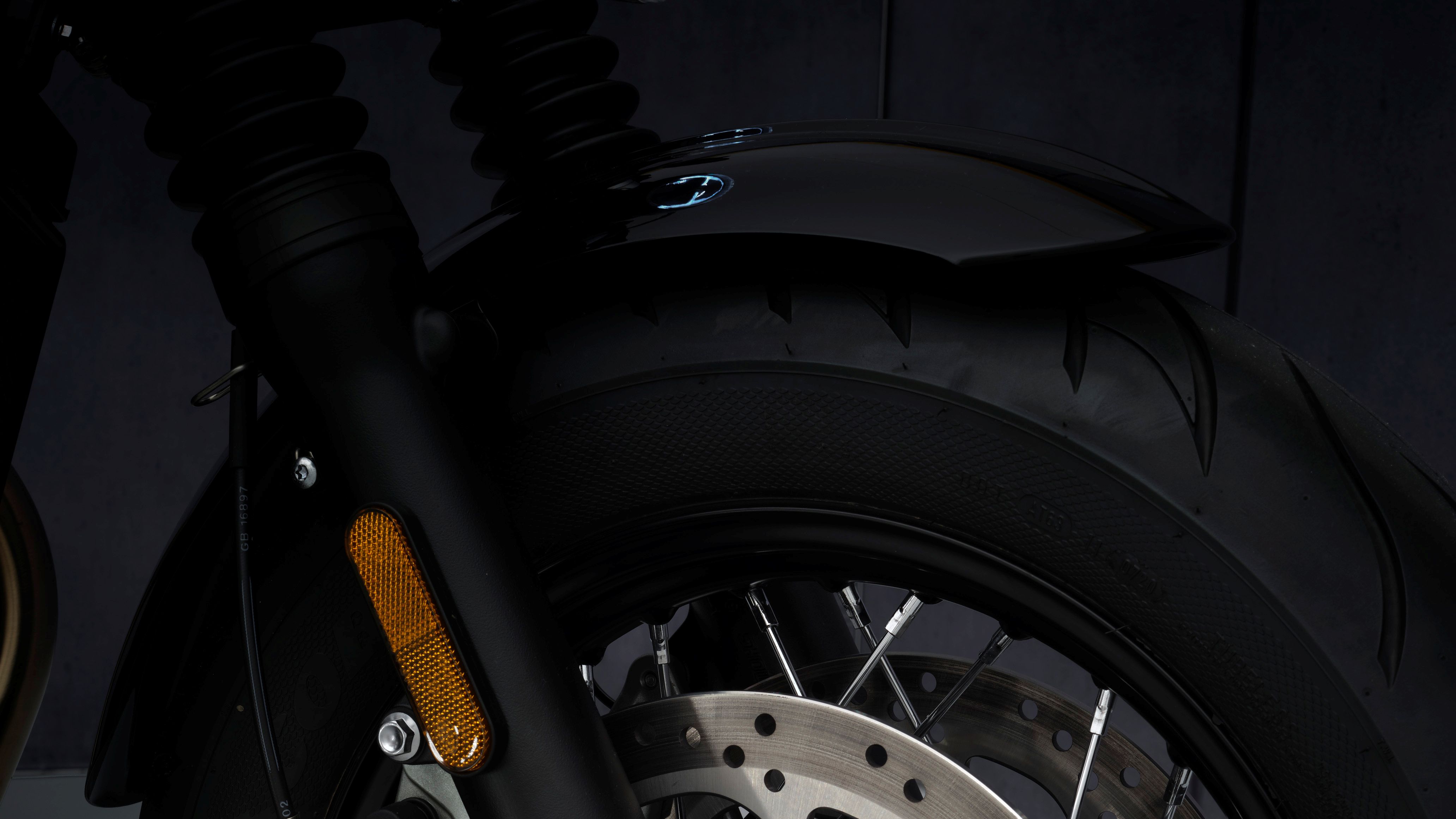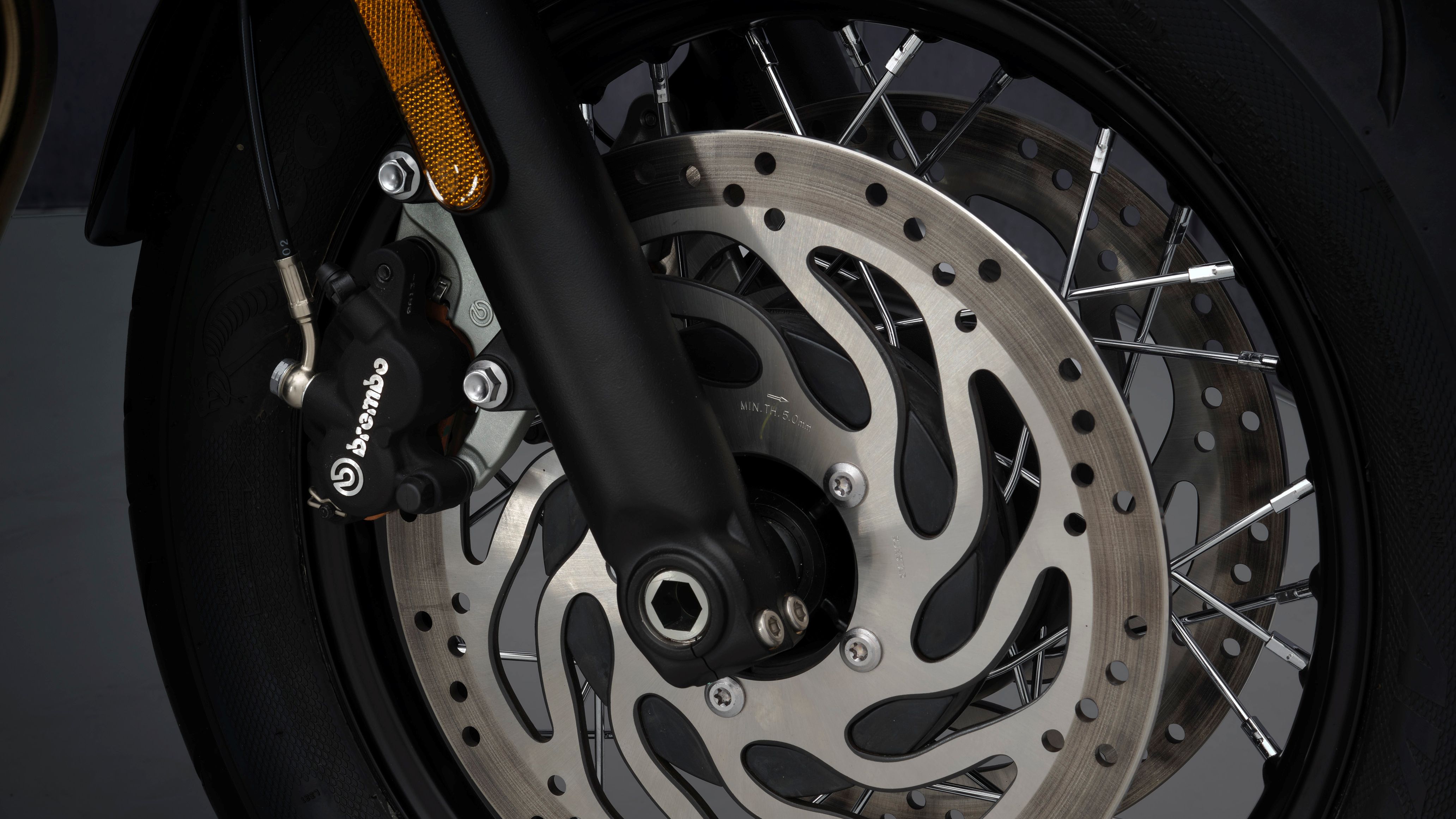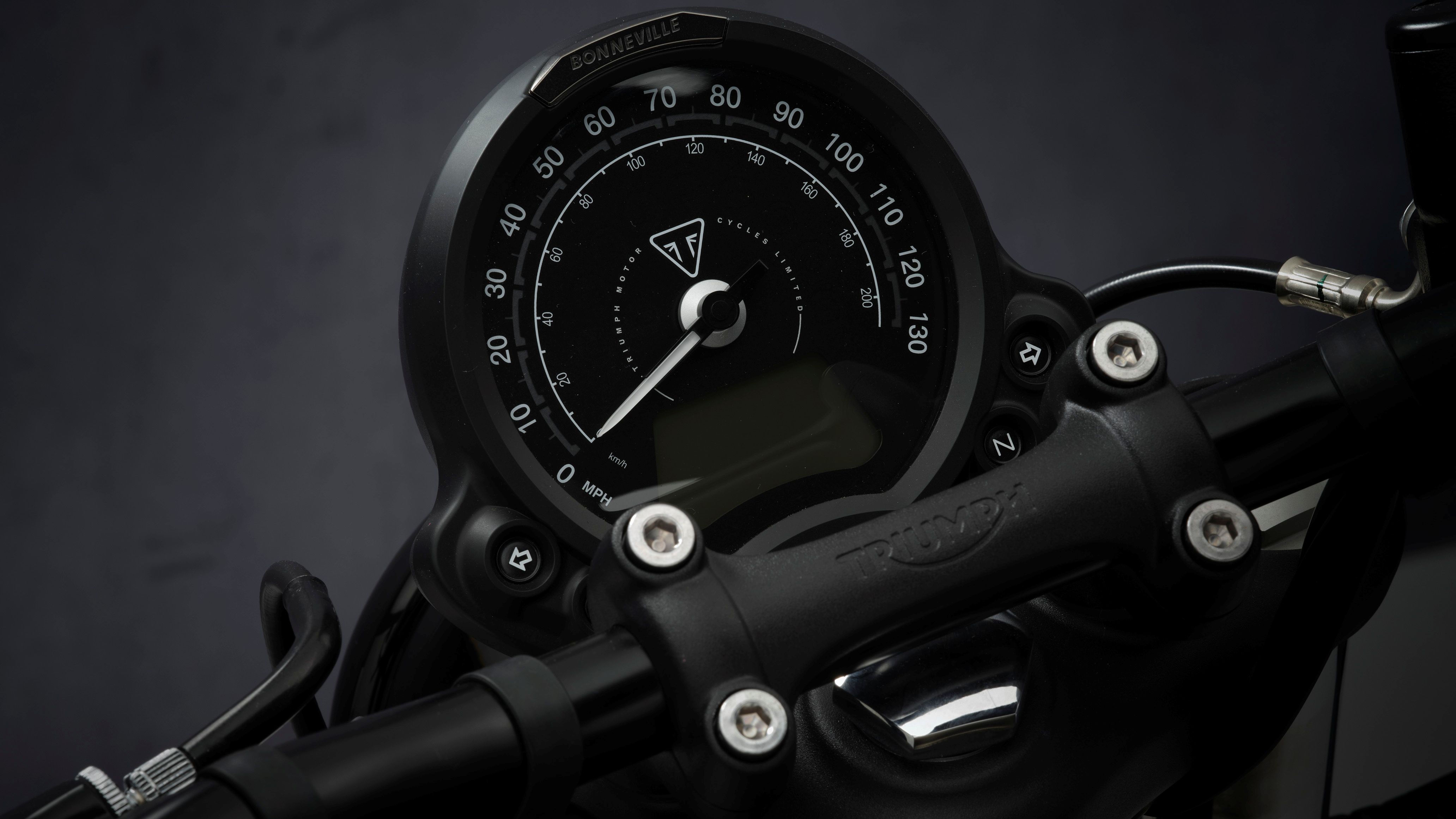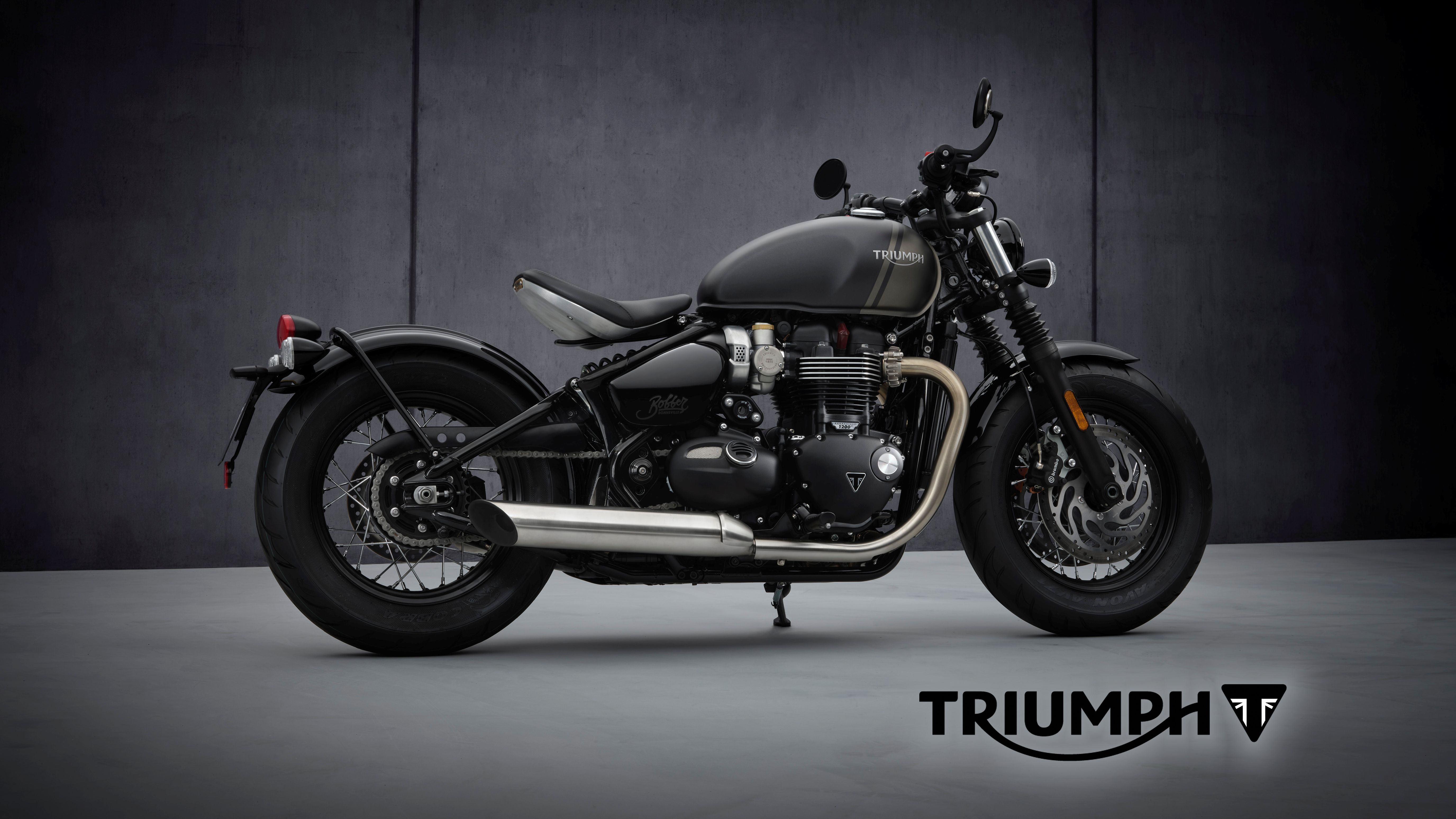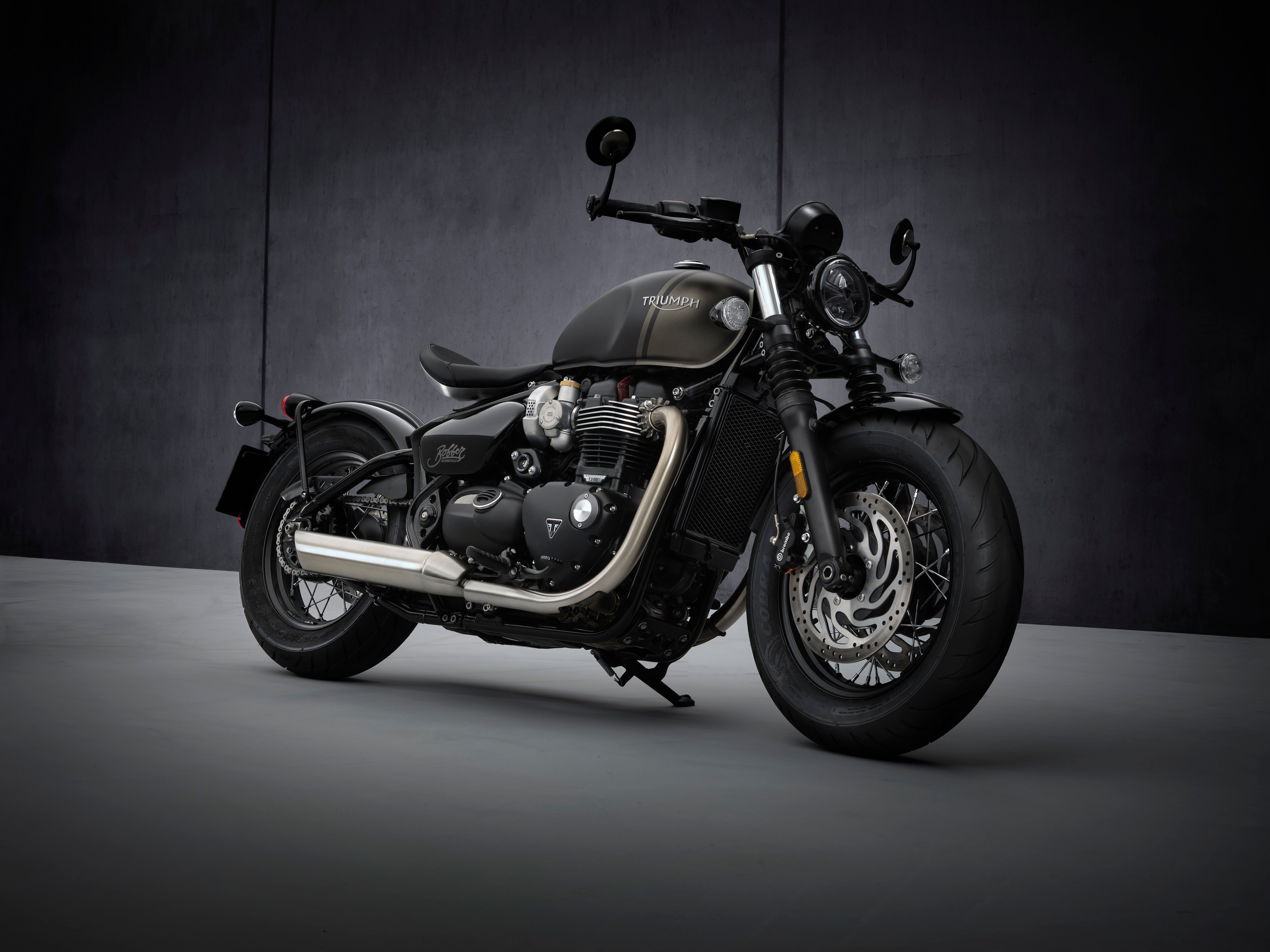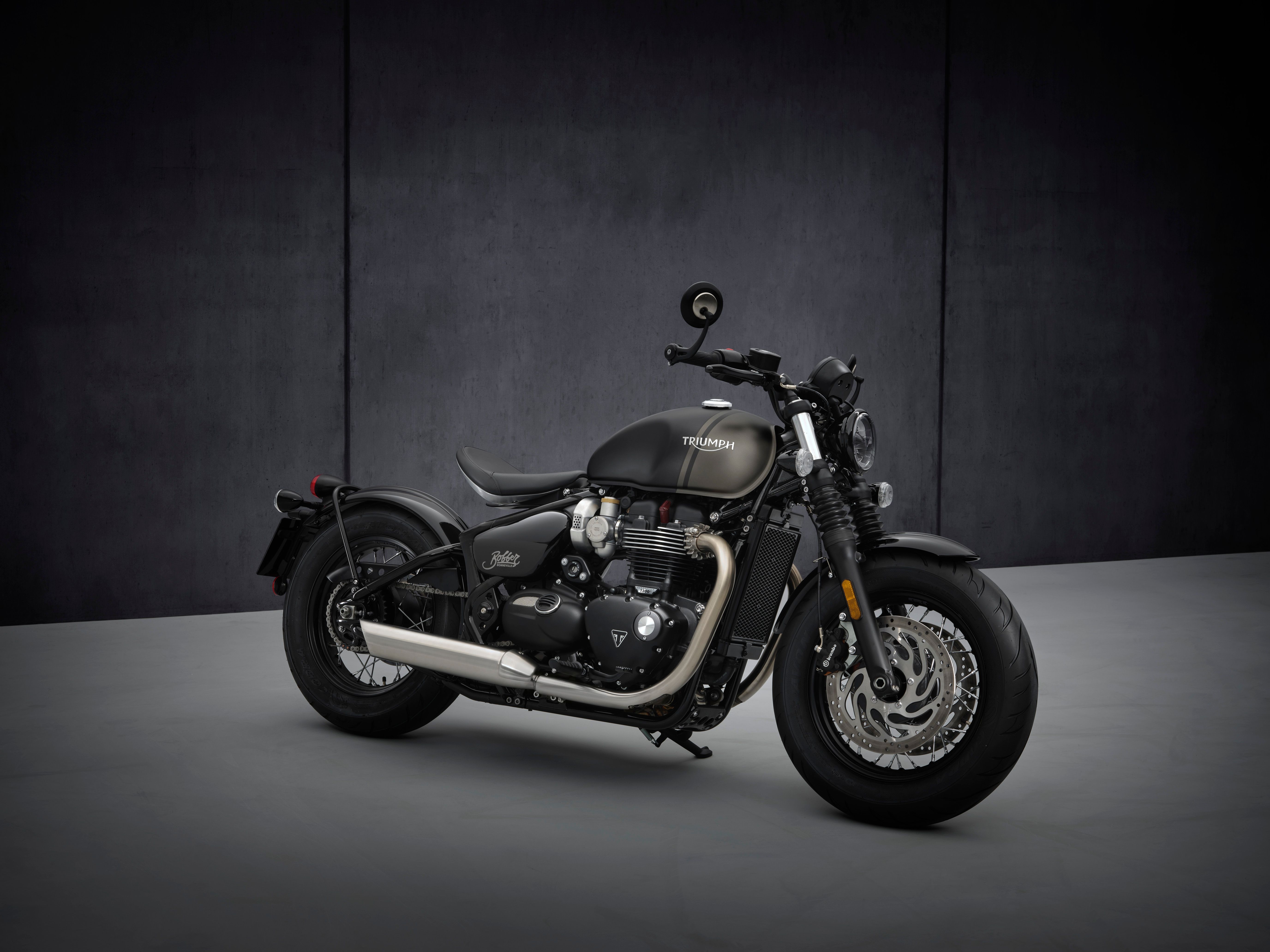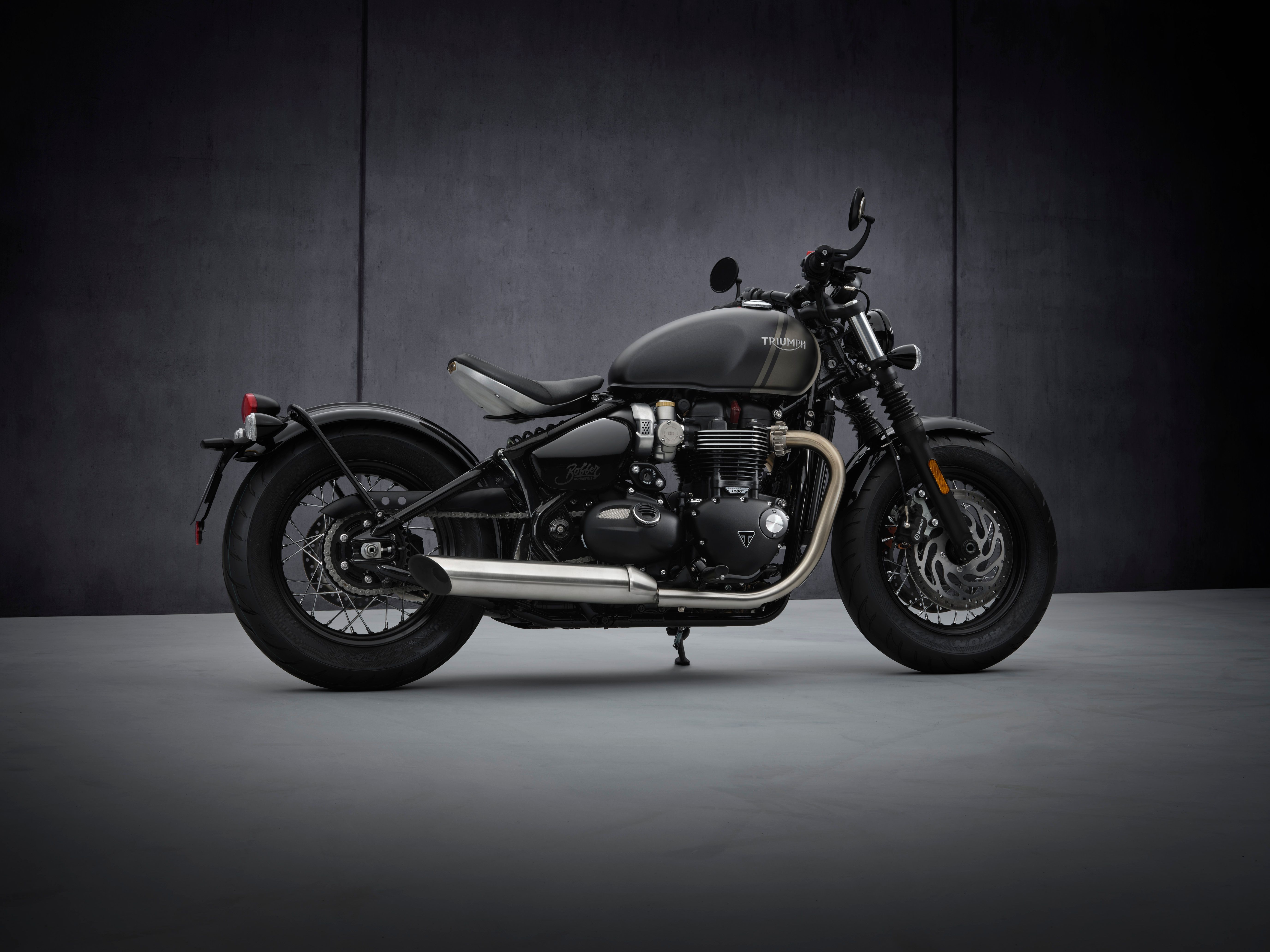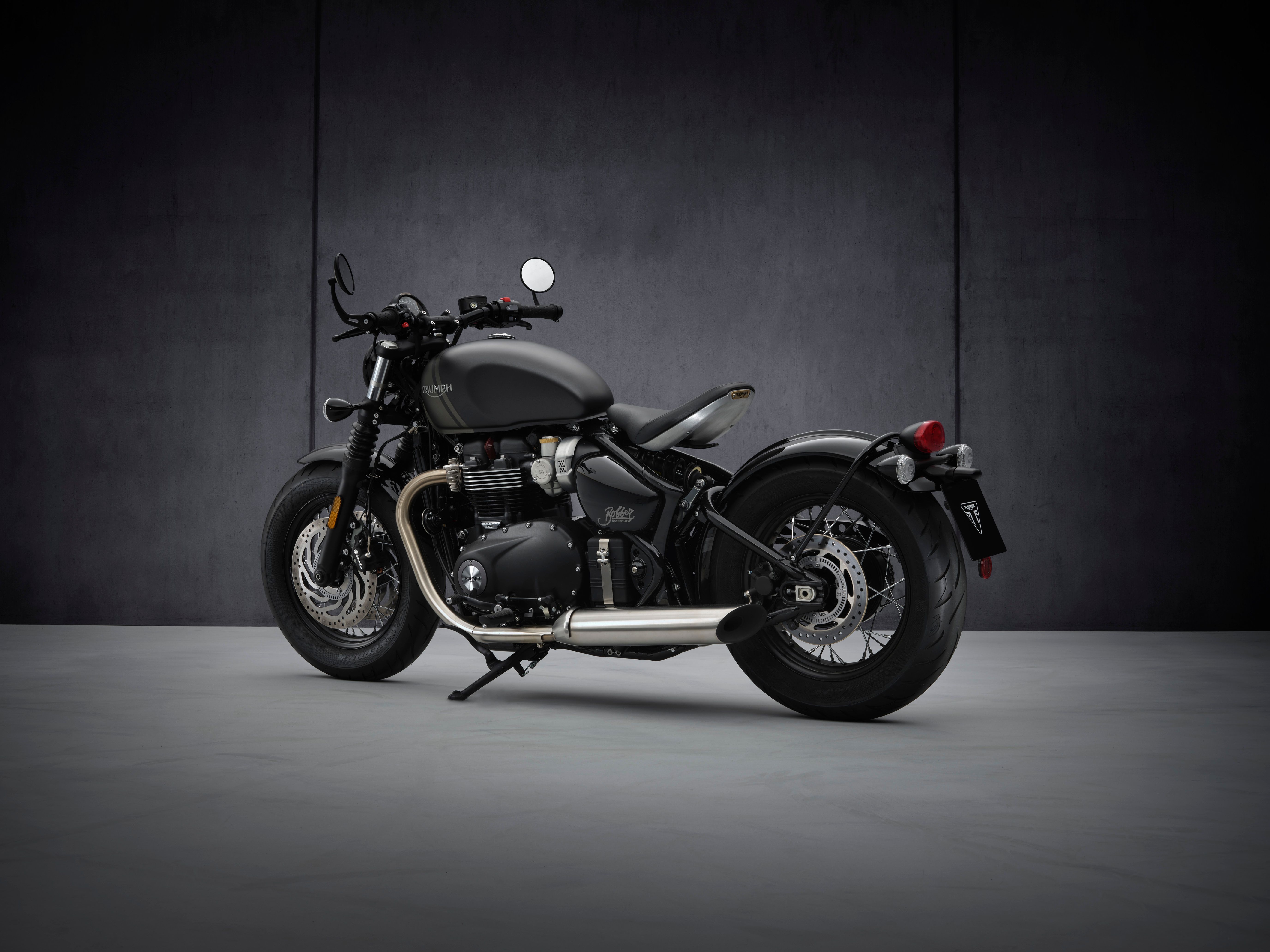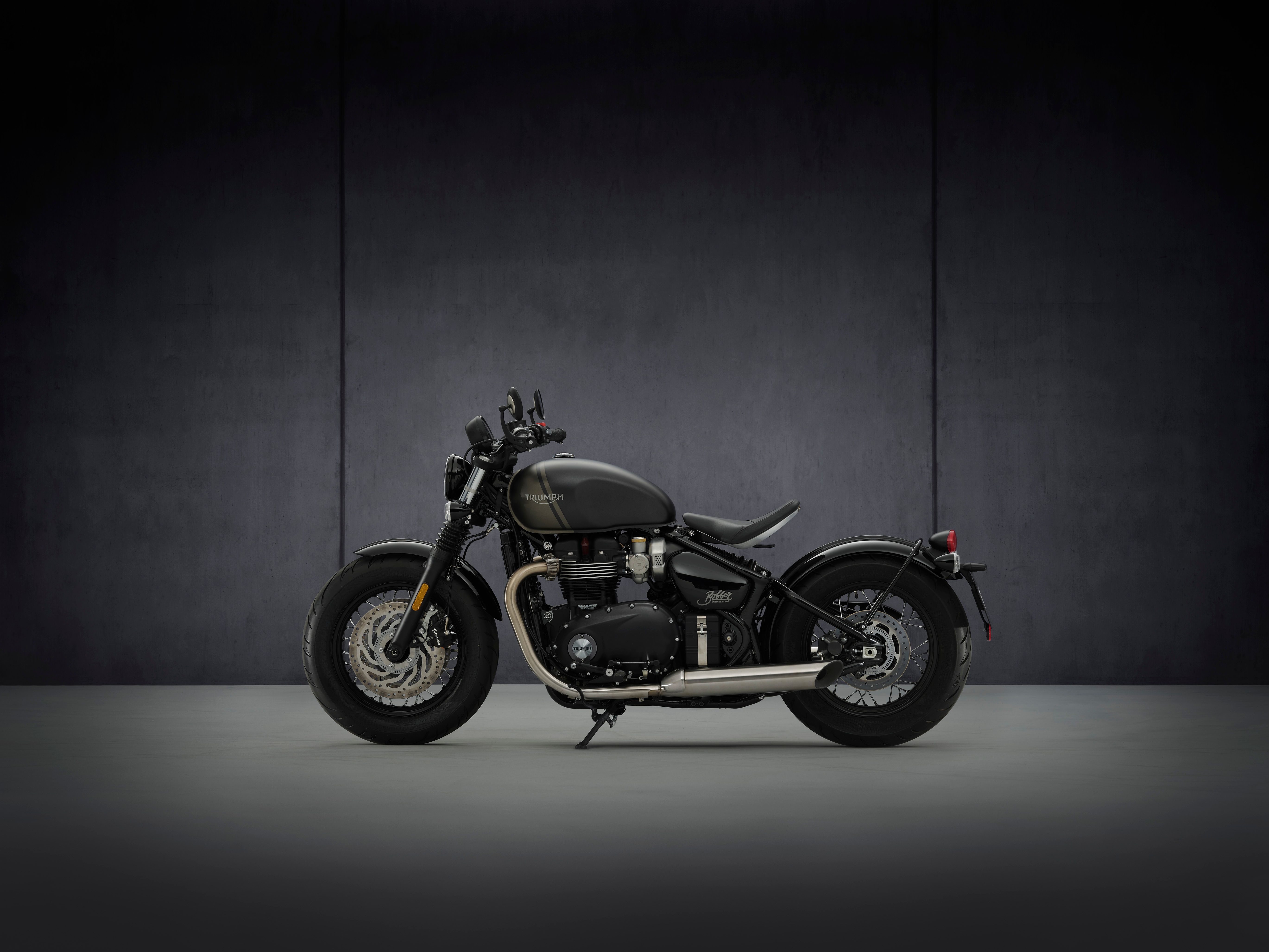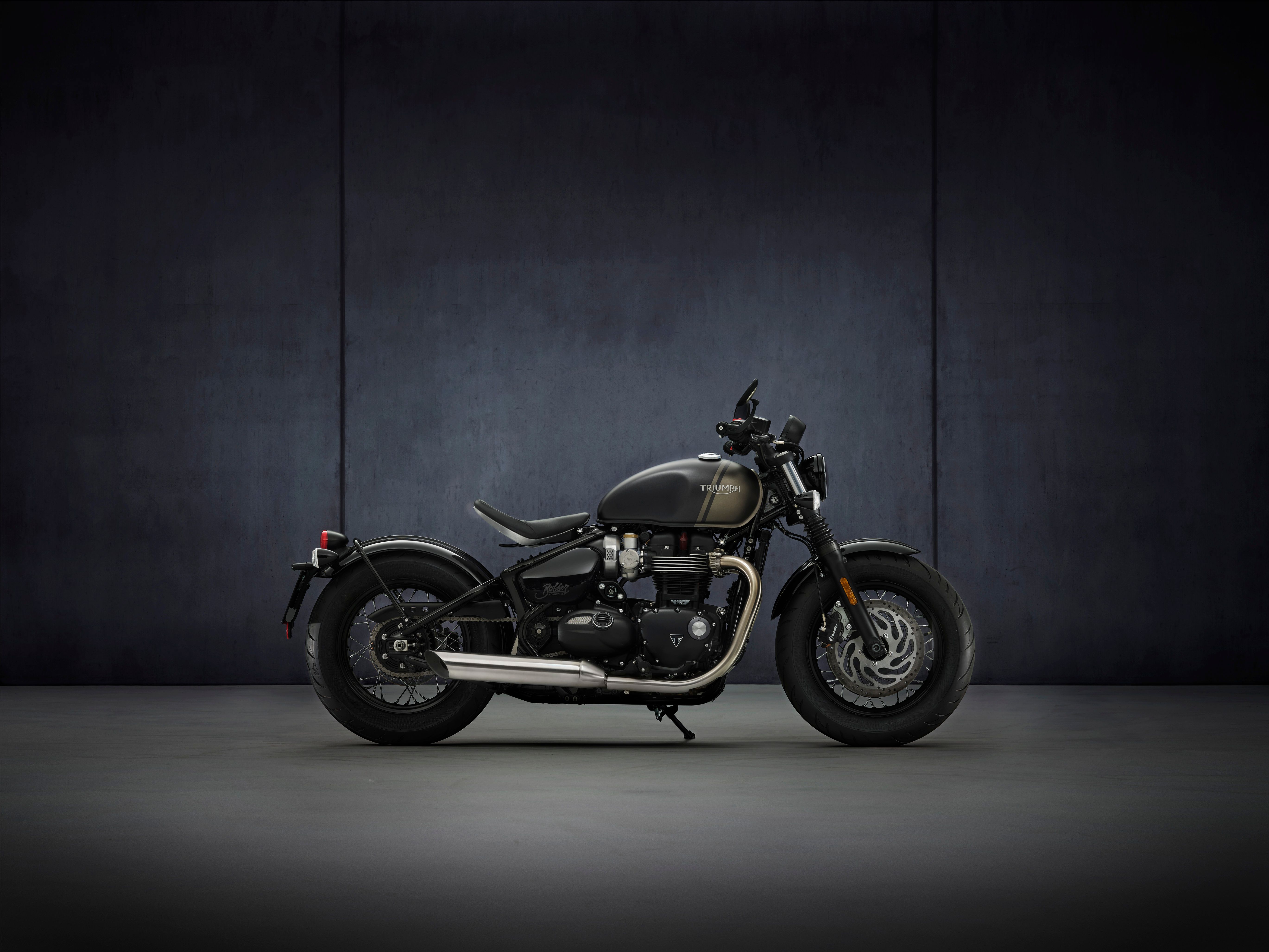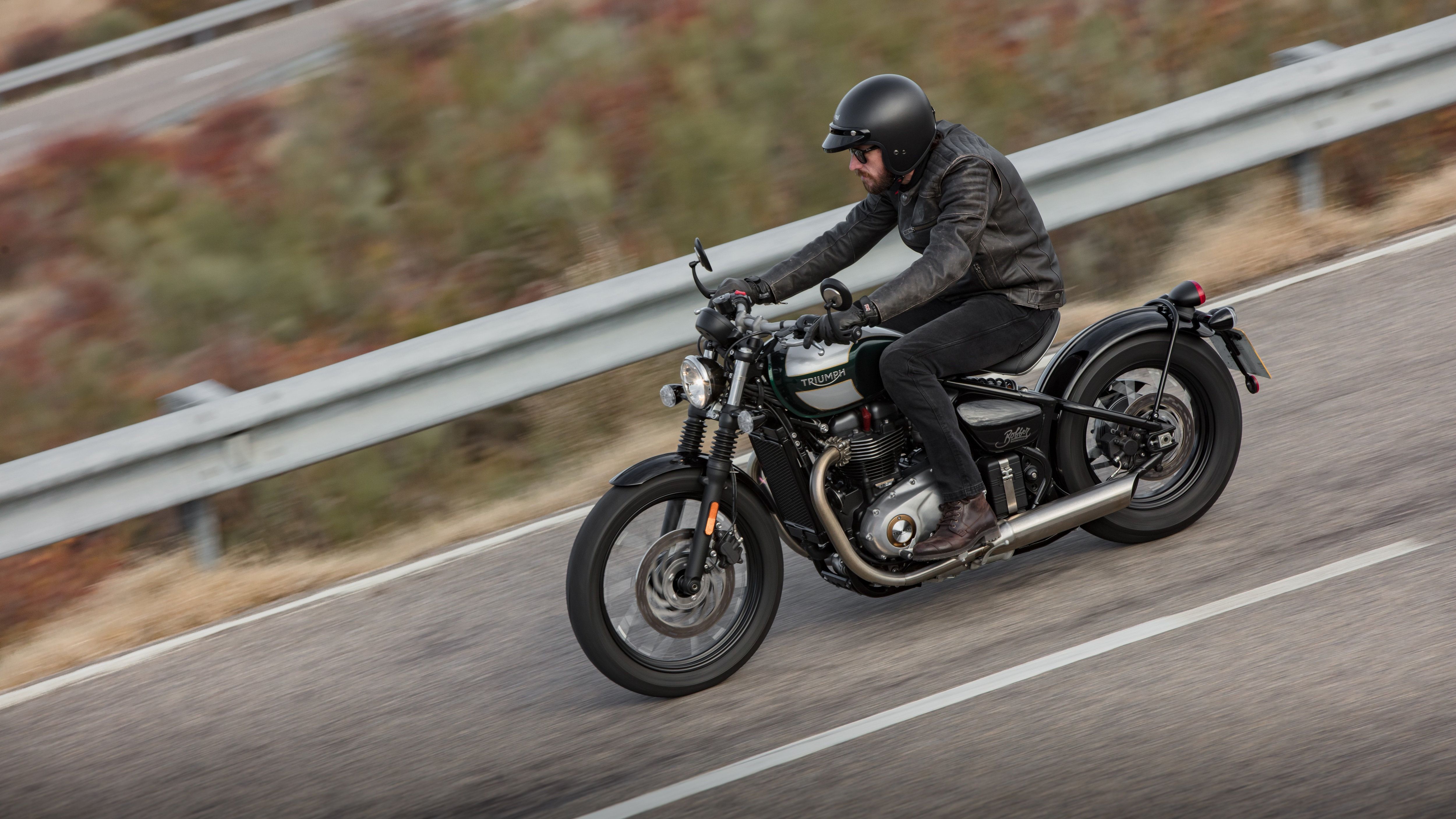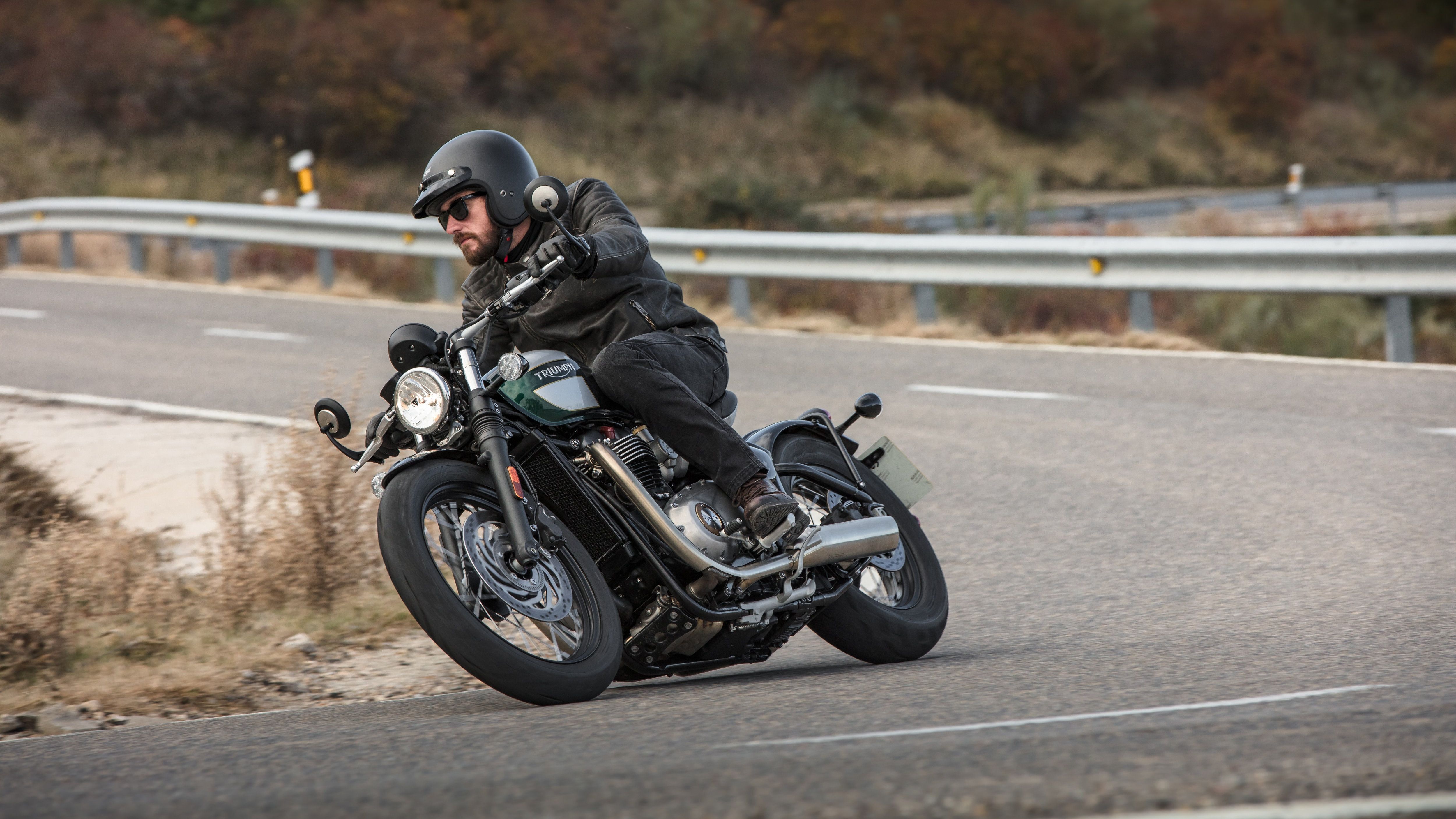Triumph updated its Bonneville Bobber platform ahead of MY2021 with a number of improvements. Brake and suspension components were spruced up, along with a larger fuel tank and the extra range it brings. The engine itself is cleaner than ever and it spools up faster than ever for a double whammy in the drivetrain, plus the suspension and brake components come off a higher shelf to finish the practical changes. New paint packages and expanded blackout treatment gives this year-model a unique look, in spite of Triumph's efforts to channel the soul of a decades-old design. it spools up faster than ever for a double whammy in the drivetrain, plus the suspension and brake components come off a higher shelf to finish the practical changes. New paint packages and expanded blackout treatment gives this year-model a unique look, in spite of Triumph's efforts to channel the soul of a decades-old design.}}
2021 - 2022 Triumph Bonneville Bobber
- Make: Array
- Model: 2021 - 2022 Triumph Bonneville Bobber
- Engine/Motor: Parallel Twin
Triumph updated its Bonneville Bobber platform ahead of MY2021 with a number of improvements. It has spruced up brake and suspension components along with a larger fuel tank and the extra range it brings. The engine itself is cleaner than ever and it spools up faster than ever for a double whammy in the drivetrain, plus the suspension and brake components come off a higher shelf to finish the practical changes. New paint packages and expanded blackout treatment gives this year-model a unique look, in spite of Triumph's efforts to channel the soul of a decades-old design.
2022 Triumph Bonneville Bobber Performance & Capability
The electronic fandanglery on the Bonneville Bobber starts in the engine-control equipment with a ride-by-wire throttle. It enables the switchable traction control feature and Ride Modes system with a pair of profiles – Road and Rain – that lets you quickly set up to suit your style.
When I say that the factory spared no effort to make this new Bonnie Bobber look like an antique, I really mean it. Tucked within the faux-rigid frame is a vertical parallel-twin powerplant that longtime fans will recognize as having roots back to the middle of the previous century.
The factory even made special throttle bodies that are the spitting image of the old mechanical-slide carburetors. Seriously, the only thing Trumpet could do to improve on the Bobber's antique chops would be to chuck on a kickstarter.
Unlike its forebears, this engine rocks a 270-degree firing order. This gives it a lope at idle and prevents that “angry lawnmower” racket while underway that's so typical of 180-out lumps.
Bore and stroke are oversquare at 97.6 mm and 80 mm respectively to give the Bonneville its 1,200 cc displacement. The 10-to-1 compression ratio should tolerate mid-grade fuel quite happily.
Another contrast with its predecessors is in the valvetrain. Rather than the old pushrod system, this engine runs with a single over-head cam that times the 8-valve head.
The cooling fins are typical of air-cooled engines, but this plant is actually liquid cooled. The fins are mostly decorative though they do carry off some waste heat, no doubt about it. As for the power figures themselves, the Bonneville Bobber generates 76.9 horsepower at 6,100 rpm with a deep torque well at a claimed 78.2 pound-feet of grunt at an even four grand.
A torque-assist wet clutch couples engine power to the six-speed transmission, which in turn sends power to the rear wheel via a tough chain drive. The Bonneville Bobber top speed is 112 mph (180 km/h).
|
Engine & Drivetrain |
|
|
Engine: |
Liquid cooled, 8 valve, SOHC, 270° crank angle parallel twin |
|
Bore x Stroke: |
97.6 mm x 80 mm |
|
Compression: |
10.0:1 |
|
Max Power EC: |
76.9 hp @ 6,100 rpm |
|
Max Torque EC: |
78.2 lb-ft @ 4,000 rpm |
|
System: |
Multipoint sequential electronic fuel injection |
|
Exhaust: |
Brushed stainless steel 2 into 2 twin-skin exhaust system with brushed stainless silencers |
|
Final Drive: |
Chain |
|
Clutch: |
Wet, multi-plate torque assist clutch |
|
Gearbox: |
6-speed |
Design
There's a lot to unpack here on the Bonneville Bobber. It has numerous Easter eggs sprinkled around for viewers with a keen eye and some historical knowledge to back it up.
From the ground up, this thing is a rolling homage piece that draws on Triumph's storied past for its design inspiration, specifically the home job-customs that sprang up in the early post-war years. Wire wheels set the stage with blackout rims and hubs all bound together with polished spokes.
The blackout treatment continues into the fork sliders, headlight can, and tripleclamp. Old-school, bellows-style gaiters cover the swept area of the inner fork tube to further date the design in the most delightful of ways.
Like the bobbers of old, this modern version carries the characteristic chopped-down fenders front and back that gives it its name. Minimizing the weight from the sheet metal improves performance.
The single round headlight housing is also a historical throwback, though, like the rest of the lighting, it relies on LED brightness for effective two-way visibility. It also sports a DRL feature to help drivers see you during daylight hours. Behind the light is a single round gauge with an analog speedo, idiot lights, and LCD screen to handle all of the instrumentation in one location.
Short handlebar risers and a short-rise handlebar pull the hands forward and down. It's almost drag-bike-like but not quite, with mid-mount pilot's footpegs and a sculpted solo saddle to complete the relaxed rider's triangle. This allows for an upright riding posture with a nice neutral leg position for riders of average height.
Speaking of height, Trumpet sends its Bobber out with an adjustable seat you can set at 27.2 inches off the deck or jack up to 27.6 inches high. This gives you some control over the final shape of the triangle.
|
Triumph Bonneville Bobber Specs |
|
|
Width Handlebars: |
31.5 in (800 mm) |
|
Height Without Mirror: |
40.3 - 41.5 in (1,024 – 1,055 mm) |
|
Seat Height: |
27.2 - 27.6 in (690 - 700 mm) |
|
Wheelbase: |
59.1 in (1,500 mm) |
|
Fuel Capacity: |
3.2 US gal (12 liters) |
|
Wet Weight: |
553 lb (251 kg) |
Chassis
While you can say that the frame sets the stage for every bike, the Bonneville Bobber's bones go far beyond simple support. Welded tubular-steel members a double-downtube/double-cradle arrangement completely cups and supports the engine rather than using the mill as a stressed member.
Rake and trail are dead short at 24.5 degrees and 3.6 inches respectively. This gives the Bobber rather sharp handling characteristics that give lie to its home-cobbled look.
The fall from the steering head to the rear of the backbone is reminiscent of the geometry from the old hardtails. From there, a triangular swing-cage unit continues those old-school lines with an under-seat shock that buoys the rear end for a modern ride in spite of its antique mien.
The front end is lent more visual weight. A chunky new 47 mm front forks and a fat 16-inch front hoop matched by a 16-inch rim out back with Avon Cobra hoops make the connection to the concrete.
In spite of the fact that the Bonneville Bobber weighs in at a middling 553 pounds soaking wet, the factory doubled down on the front brakeage with twin-piston anchors that bite dual 310 mm discs. Out back, a single-pot Nissin caliper and 255 mm disc take care of business. ABS protection covers both ends as part of the standard equipment package.
|
Chassis & Suspension |
|
|
Frame: |
Tubular steel, twin cradle frame |
|
Swingarm: |
Twin sided fabrication |
|
Front Suspension: |
Ø 47 mm Showa cartridge forks |
|
Rear Suspension: |
Mono-shock RSU with linkage |
|
Rake: |
24.5º |
|
Trail: |
3.6 in (92.0 mm) |
|
Front Wheel: |
Wire 32-spoke, 16 x 2.5 |
|
Rear Wheel: |
Wire 32-spoke, 16 x 3.5 |
|
Front Tire: |
MT90B16 |
|
Rear Tire: |
150/80 R16 |
|
Front Brakes: |
Dual 310 mm disc, Brembo 2-piston sliding axial calipers |
|
Rear Brakes: |
255 mm disc, Nissin single piston sliding axial caliper |
2022 Triumph Bonneville Bobber Price and Availability
Price and paint are inextricably linked with this bike. Pricing & Equipment for the glossy Jet Black that, when paired with the stock blackout treatment, makes for a very dark machine indeed. Even the “color” packages come with gloss black fenders front and rear with the only color found on the fuel tank.
In the middle of the range is the Cordovan Red fuel tank paint for $13,700, and at the top is the two-tone Matt Storm Grey/Matt Ironstone for $13,900. The new Gold Line edition with its hand-painted details starts at $14,200.
|
Instrument Display and Functions: |
|
|
Service interval: |
Analogue speedometer with LCD multi-functional display |
|
Color: |
10,000 miles/16,000 Km or 12 Months, whichever comes first |
|
Price: |
Jet Black, Matt Storm Grey/Matt Ironstone, Cordovan Red |
|
faux |
|
|
└ 2021: |
$13,150, Color: $13,450, Two-tone: $13,650 |
|
└ 2022: |
$13,400, Color: $13,700, Two-tone: $13,900, Gold Line Edition: $14,200 |
He Said
There's just no way around it. The faux-rigid frame puts the Bonneville Bobber in fairly rare company indeed. It is without reservation that I go straight to Harley-Davidson for its own genuine imitation hardtail bobber model, the Softail Slim.
je ne sais quoi1
The similarities are remarkable in the visuals department between the Bonneville Bobber and the Softail Slim. Cut-down fenders are constant across the board, as are the round cyclops headlights and old-school-shaped instrumentation. Just as the Triumph tank is distinct in its tapered shape, the Harley's tank is notable for its lack of leg accommodation and teardrop shape in profile for one fairly major design divergence.
The Softail's solo saddle comes nestled into the swale in another contrast to the Brit that seems to emulate the look of the old post-type seat springs but is in fact fixed to the main frame. Fat tires line laced wheels that rock the same blackout hub and rim with polished wire spokes to tie it all together.
The Harley packs in a lot more engine with its 1,753 cc Milwaukee-Eight 107 on power delivery duty. It's nearly half-again more, and that converts to more juice with 110 pounds o' grunt against the Bonnie's 78.2 pound-foot output.
You'll pay for that power to the tune of $15,999 for Vivid Black, up to $16,749 for the two-tone treatment. ABS is a $795 option, so don't forget to factor that in for the price comparison. H-D has no answer for the traction control and ride modes featured on the Bobber to fall further behind.
She Said
“This is absolutely my favorite Triumph bike right now, and that bumps the Thruxton, which is a decision I didn't arrive at lightly. I mean, just look at the thing. Those old-school lines and homegrown chops, all with the undercurrent of influence, that je ne sais quoi that sets Brit bikes apart from the rest of the world. Plus it's a sleeper hot-rod that is bound to surprise anyone tempting you into a bit of a drag race between lights.”
She Said
My wife and fellow motorcycle writer, Allyn Hinton, says, “Triumph combined the Bobber with the Bobber Black this year, so the Bobber gets the larger front forks and blackout treatment. The fuel tank is larger, it has engine improvements and subtle design updates. The Bonneville line has been a good seller for Triumph and their newest Bobber doesn't let the family line down.”

